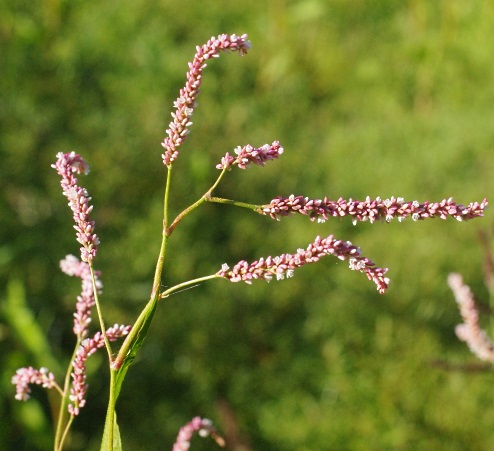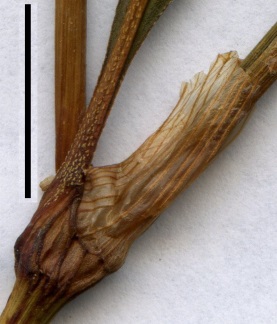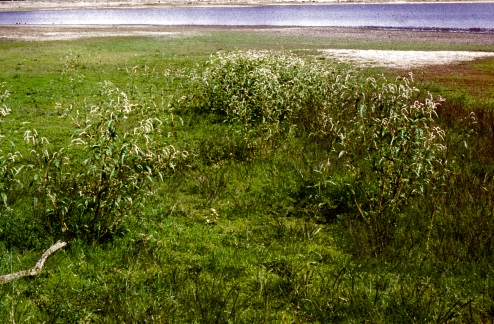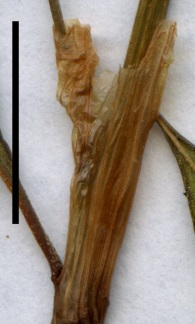scale bar = 1cm.
Pale Knotweed- a native (Persicaria lapathifolia).
Home.....
Menu.....
Common name index.....
Scientific name index.....
Glossary .....
Wetland plants....

Other names: Pink Knotweed.
Family: Polygonaceae (Knotweed family). Cosmopolitan.
Native of Australia, Europe, Asia and northern Africa.
Occurrence: Grows beside streams, and the margins of swamps and lakes. It may be locally abundant.
Identification:
- it grows in damp areas
- it is taller than the other knotweeds, growing to a metre or more
- the flowers are pink or greenish-pink, and grow in a long narrow cylindrical cluster
- the leaves are broad, and often have a brown blotch
- there are sheaths at the base of the leaves which surround the stem; the sheaths do not have bristles.
Pale Knotweed is an annual or biennial. Occasionally the leaves and stems have dense cottony hairs.
Similar species: Slender Knotweed is similar in appearance. It does not grow as high (to about 50 cm), and the sheaths at the leaf-bases are bristly.
Photos 1, 2: Pale Knotweed on the exposed banks of Harcourt North Reservoir. 3, 4: The sheaths at the leaf bases (the ochreas) do not end in bristles.



There are three knotweeds common in the district. All grow in wet areas e.g.mud-flats, beside streams etc..
Creeping Knotweed (Persicaria prostrata). Prostrate plant. Sheaths at leaf bases develop a green leaf at the tip.
Slender Knotweed (Persicaria decipiens). Spreading or erect. Sheaths at leaf bases end in stiff hairs.
Pale Knotweed (Persicaria lapathifolia). Erect plant tp 1 metre or more. Sheaths at base of leaves summit often torn, not ending in hairs.